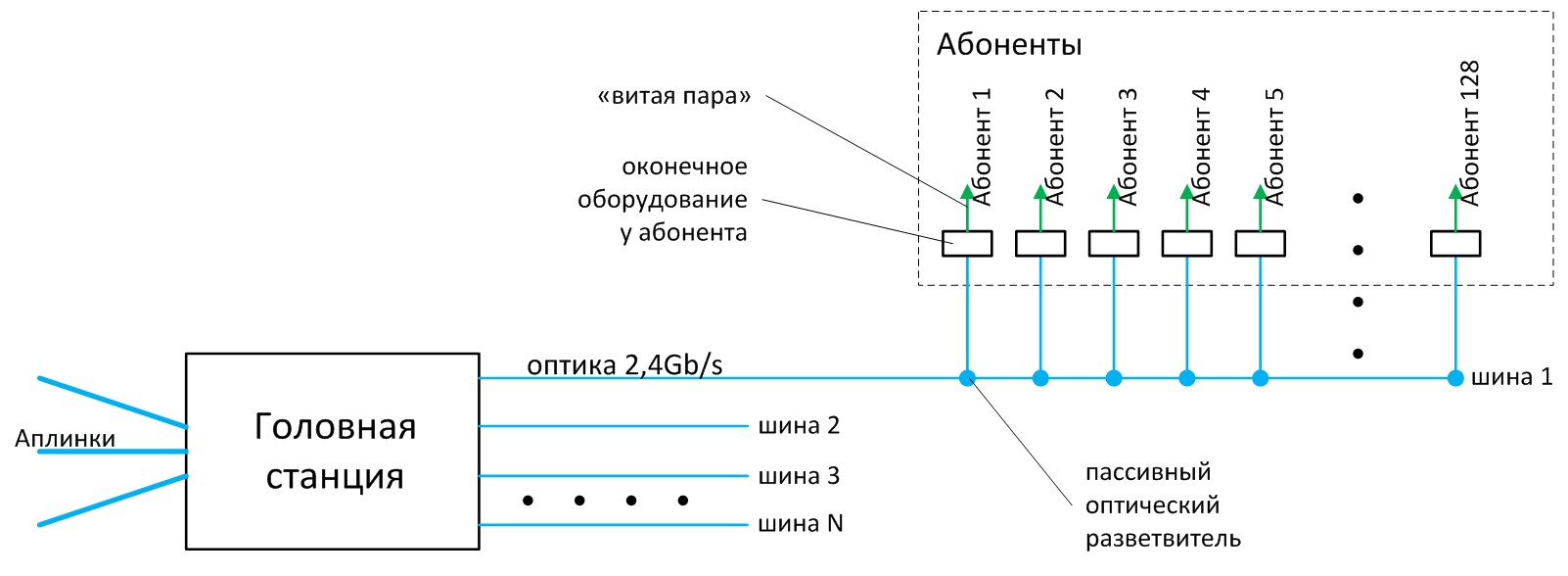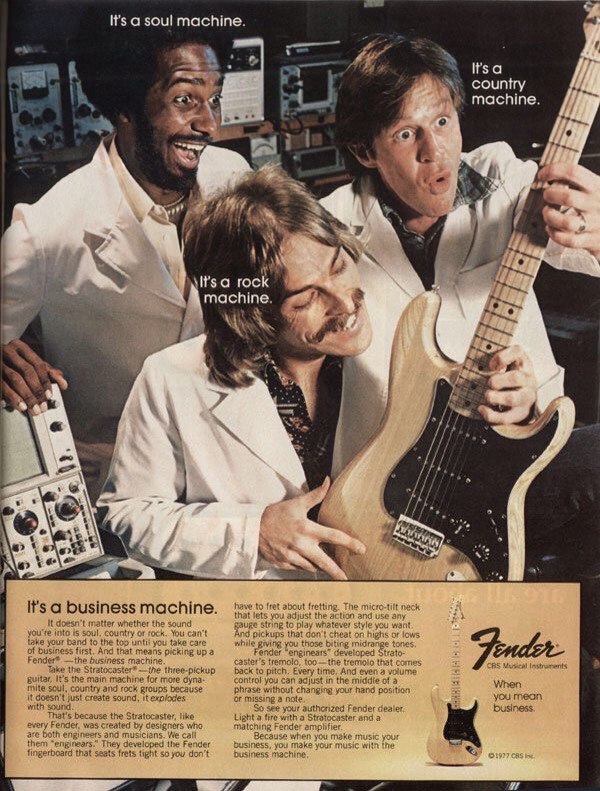GPON technology in apartment buildings - the future of Internet service providers or a marketing bubble?

I welcome everyone. This is a first-person text. Written by Dmitry Kozmenko.
First of all, I want to emphasize that we, the Sochi provider "Business Communication", for five years, we have been successfully using passive optical network technology in Sochi and surrounding villages. At the moment, we have more than thirty GPON headends serving several thousand subscribers. We are familiar with the technology firsthand, participated in closed tests, debugged firmware together with the developers of both the devices themselves and the chipsets. That is, we, of course, use GPON technology in our work. However, wherever possible, we work with the classic twisted pair circuit. And for some reason, it never occurred to us to take a message about GPON in any marketing entices of subscribers or as some of our very special competitive advantages. Because, if you look carefully and in detail, the GPON technology went and went to subscribers. And the fact that many providers position the use of GPON as a strong product advantage for subscribers - it looks strange. Not to say that it looks like a little fraud.
Today, the GPON line of the following manufacturers is widely represented on the Russian market: Huawei, Qtech, Bdcom, Eltex. The article is written taking into account the experience of working with these pieces of iron of both your own and your colleagues.
And so as not to get up twice, I want to warn readers from buying GPON terminals cheaper on Aliexpress, etc. Although the technology has a common name, the protocols inside it are overwhelmingly proprietary, that is, the subscriber terminal of the same manufacturer will not work with head station of another manufacturer. For technical support, subscribers sometimes bring some game bought on the Internet and ask us to set it up. Alas, this is just money thrown away. Vendors defend their positions in the market and still get the main profit on subscriber terminals, which are sold in large quantities, and not on the “head”, which they are ready to give up to operators at a large discount. None of them will want cheap subscriber nouns compatible with his station.But we were distracted, back to the topic. What are the advantages of GPON technology, why do operators introduce it massively, and marketers praise it? And they praise something like this:

State-of-the-art GPON connection technology ensures stability and the highest quality of connection, independent of the overall network load and external factors. GPON is a modern speed standard adopted in Europe and the world.OK.
The provider (such and such) will connect for you unlimited broadband access using the super-fast GPON technology. We offer a wide range of speeds, starting from 20 and ending with unrealistically fast 500 Mb / s!
Each subscriber ... receives a dedicated fiber channel. Its high throughput is the key to a stable speed throughout the day, and the quality of communication remains high thanks to advanced technologies.
GPON Internet from the provider (such and such) is the maximum comfort for each user!
Connect the selected tariff for FREE and be sure: the speed of your home Internet will remain stable day and night.
GPON (Gigabit Active Passive Network) is a rapidly evolving technology that provides multiservice access services with guaranteed high quality over a single fiber optic cable. It involves laying a modern cable from the PBX to the subscriber’s apartment, excluding any active equipment along the way. In the intermediate nodes are splitters (optical splitters) that do not require maintenance and power. This allows you to achieve high bandwidth for the channel and, accordingly, connect several services on the same line.
Marketers spoke out. Let's look at the facts now. GPON technology was standardized by ITU-T back in 2008. But the breakthrough did not happen then for a number of reasons (glitchiness and high cost of equipment). The second birth of this technology was in 2013-2014.
I suggest, based on existing practical experience, briefly go over the advantages that GPON really gives.

Saving. Today, a meter of high-quality copper UTP-5e costs 15-17 rubles, a meter of high-quality distribution optics - 4 rubles.
Communal.The operator does not need to rent space for communication centers and offset the cost of electricity in each apartment building (hereinafter referred to as MKD). And when installing a new subscriber, the installer does not need to make any movements on the node, look for keys to the attic, etc., etc. The
maximum distance of the subscriber line. For a “twisted pair”, the maximum length of a gigabit connection, in our experience, is 100 meters. For optical connection via GPON - 20-40 km. That is, it is possible to serve several MCDs, a whole block, with one head station.
Non-volatility.Since the entire route from the headend to the subscriber is passive, the presence of power supply is required only at the operator’s site and at the subscriber. At the same time, the entire territory between them can be de-energized by local electric networks, or ZhEKs, or crazy electricians, and generally be in the dark of the night.
Small size. An intra-object cable with a diameter of 3 mm is much easier to insert into the clogged interfloor shafts of the old MKD than a bundle of “vituhi”; in fact, in the classical scheme, each subscriber needs a separate “vitukha”, while GPON needs one fiber per “bus” and splitters on the floors.

As an operator, we deploy GPON when we go into the suburbs: cottage villages, the private sector, country cooperatives, etc. In general, where the network is built on poles (the word "poles" is terribly disliked by energy), consumers are spread over big areas, and splitters fit comfortably into cable boxes. Here all the advantages of this solution are manifested in full growth: the length of the route, and non-volatility, and savings. In fact, in such areas there is no real alternative to the GPON solution.
A GPON network consists of a head station with 4, 8 or more segments, or beams; Next comes the optical distribution network, built according to the classical tree-like scheme, where the branches are optical fibers and the branches are passive optical power dividers (splitters). At the ends of these "branches", like apples, hang subscribers who have terminal optical terminals (ONU or the like) installed. According to manufacturers' specifications, up to 128 subscribers per segment; that is, one headend for 8 segments is capable of serving 1024 subscribers simultaneously. Headend on the example of ELTEX LTP8x:

Such a concentration of subscribers in one fiber occurs due to the simultaneous application of the principles of frequency and time multiplexing (FDM + TDM) - the same as in cellular networks. Frequency: reception and transmission to all subscribers are in the same fiber, but at different wavelengths. Temporary: thanks to LTE multiplexing protocols, the headend and subscriber terminals work as a single system, disassembling IP packets from a common bus, relaying the necessary ones through them, and discarding packets destined for other recipients. In fact, the GPON segment is a shared data bus where everyone sees everyone, and from which subscriber devices “pull out” the packets intended for them. This whole design works at 2.4 gigabit per second upstream / downstream speeds. On the side of the headend, the optical “tree” is included in the trunk in a special SFP PON module. On the subscriber side, the terminals have a direct on-board optical connector.

Schematically, the GPON network can be represented as follows:

But if GPON has so many advantages, and if it is such a progressive and wonderful technology, why do not all operators switch to it, at least when building new networks in the MKD?
And here I will tell you about the pitfalls.
First, let's turn to the tablets. Here's how GPON bandwidth specifications are described, as recommended by RFC-G.984.1:
7 Bit rateNow let's repeat what are the advantages of GPON:
Basically, GPON aims at transmission speeds greater than or equal to 1.2 Gbit / s. Accordingly,
GPON identifies two transmission speed combinations as follows:
• 1.2 Gbit / s up, 2.4 Gbit / s down;
• 2.4 Gbit / s up, 2.4 Gbit / s down.
• Non-volatility along the way from the communication node to the client;
• long distance;
• It is easier to pass interfloor cable channels;
• Cheap materials.
But wait a second, these are all the advantages for the telecom operator, but where are the advantages for the client? Hmm, hmm ... but they are not.

That is, how not? Yes, like that. GPON technology does not give a single real technological advantage in comparison with a traditional “twisted pair” to a subscriber in an apartment building.
Moreover, with the growth of the subscriber base in one segment from a couple of three to 100+ subscribers, the degradation of the quality indicators of the access level network based on GPON technology is guaranteed. That is, a situation is possible when such an “innovative” operator breaks into the MKD quarter, moves other operators there, rubs gullible people about the fact that “optics in every apartment are better than outdated copper wires”, but in fact - it transfers them from really allocated channels into a multiplexed, compacted environment, which is limited by a ceiling of 2.4 gigabits per second minus IPTV for everyone who is sitting and downloading there at the moment. By the way, IPTV for 150-200 television channels is about 600-700 mb / s, which are “eaten” from the general ones in the 2.4 gb / s segment.

Now let's dwell on the wording “optics in an apartment”.
Firstly, the classic operators IP traffic is also not carried in buckets. It is transmitted in exactly the same optics, it is only converted into an electrical signal by a switch in the house or porch, from where a “twisted pair” cable goes to the apartment. Usually the distance of such a “twisted pair” is 30-50 meters, but it can reach up to 100 meters. This does not affect the quality, the subscriber gets his honest gigabit at the access level. At the same time, the subscriber is still able to include such a “Vituha” both directly in the computer and use the router, moreover, without reference to the manufacturer. And the problem with power is solved by the use of switches with integrated battery. Easy, ril current.
Secondly, optics in itself is a difficult thing and requires qualification. It is not so easy to build up, move it to another room. The subscriber himself will not be able to do this, well, with rare exceptions. And with excessive bending - for example, inside the plinth or around the floor beam - both attenuation and reflection can begin. If you are completely “lucky” - such a reflection can lead to degradation of the level of service in the entire segment where this subscriber is included.
Thirdly, directly optics cannot be included in any subscriber device: computer, laptop, tablet, TV set, set-top box - they all receive either an electric signal in the form of Ethernet or Wi-Fi. In any case, a certain converter from optics to electricity is required, which, in the case of GPON, is located at the subscriber. At the exit from the GPON terminal towards the subscriber equipment (surprise!) - the same gigabit Ethernet port.

Yes, you can talk for a long time about the traffic profiles of apartment subscribers, that they will never utilize their channels 100%, etc., etc. But in any case, there is only one conclusion: none of the advertised “stability and the highest quality of connection GPON cannot guarantee such subscribers, and does not give any advantages over a normally built “twisted pair”, GPON does not depend on the general network load and external factors. And if the use of GPON in the "old fund" with clogged mines and memas grandmothers "We don’t need your Internet!" you can still somehow understand, the "innovators" offering IT in new buildings, where everything can be done competently and beautifully even at the design stage, where, according to modern technical regulations, cable shafts are convenient for work - I strongly refuse to understand these guys.
And taking into account all the above, rub in unsuspecting subscribers about “guaranteed 500 Mb / s day and night”, “dedicated fiber optic channel”, “advanced technology”, and at the same time connect these subscribers to a common bus with dozens of other subscribers, where everything is for everything only 2400 mb / s is how to sell mashed potatoes in a factory canteen from a common huge aluminum pan under the guise of a biological carbohydrate-starch mass, which is designed to fill cells with fast and cheap energy.

Or how to propose changing a solid, roomy Kruzak to a hand-built racing car: fast, prestigious, ultramodern. On the one hand, it sounds cool, but only then it turns out that Vasya, Masha and Vitalik from the next entrance are trying with you four to get into a single supercar. And then Maria Ivanovna, a neighbor from above, decides to park it, because she also has the right to it. Well, apparently, it is intended that users should respond to GPON like this:

But I affirm that GPON in MKD is a solution that is beneficial for the operator, but disadvantageous for the client, which has only one advantage - pure, conscience-free marketing. That is, when there are no other advantages for the subscriber (price / quality) in fact - the argument goes into battle: "but we will give you the optics directly in the apartment." I will say more - I even understand why this is happening: after all, the set of advantages for telecom operators for both customers and each other is completely limited. What could be here? Speed, stability, adequacy of technical support, prices ... well, maybe 2-3 more things will be typed. At the same time, in order to stay afloat and attract attention in a very competitive and long-divided market, to enter new buildings and corporate clients, you need to constantly think up some additional triggers, up to the point to get something “from the kitchen” that everyone has been using for a long time, and to position it as something fantastic - well, in general, as with GPON. But I also understand very well that in the end, and over long distances, it’s not these marketing tricks that play the decisive role, but the way you work: honestly or not, expensive or cheap, stable in work or your system constantly crashes, flexible or not and so on. That's what I personally bet on, but nevertheless with great interest I am watching the hype around the GPON and wondering what new marketing message will replace this ☺ Maybe we can live to see that we start boasting about better zeros and ones in binary code? ☺ that ultimately, and over long distances, it’s not these marketing tricks that will play a decisive role, but how you work: honestly or not, expensive or cheap, stable in work or your system constantly crashes, flexible or not, and so on . That's what I personally bet on, but nevertheless with great interest I am watching the hype around the GPON and wondering what new marketing message will replace this ☺ Maybe we can live to see that we start boasting about better zeros and ones in binary code? ☺ that ultimately, and over long distances, it’s not these marketing tricks that will play a decisive role, but how you work: honestly or not, expensive or cheap, stable in work or your system constantly crashes, flexible or not, and so on . That's what I personally bet on, but nevertheless with great interest I am watching the hype around the GPON and wondering what new marketing message will replace this ☺ Maybe we can live to see that we start boasting about better zeros and ones in binary code? ☺ but nevertheless with great interest I am watching the hype around the GPON and wondering what new marketing message will replace this ☺ Maybe we will live to the point that we will start boasting about better zeros and ones in binary code? ☺ but nevertheless with great interest I am watching the hype around the GPON and wondering what new marketing message will replace this ☺ Maybe we will live to the point that we will start boasting about better zeros and ones in binary code? ☺
What do you think about GPON and its real advantages for operators and subscribers? Agree / disagree with my points? Why yes, why not?
